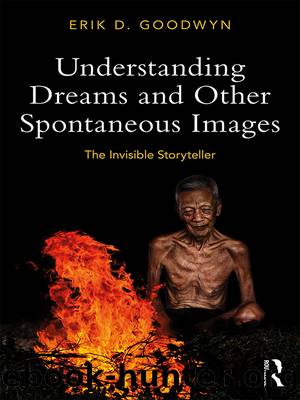Understanding Dreams and Other Spontaneous Images by Erik D. Goodwyn

Author:Erik D. Goodwyn [Goodwyn, Erik D.]
Language: eng
Format: epub
Publisher: Taylor & Francis (CAM)
In Ms. Eâs case, the primary emotion displayed by this dream was rage. The shame only came afterwards, when she woke up and realized how violent she had been in her dream. Intense rage is a very natural part of our fight/flight/freeze innate behavioral defenses and is very commonly aroused to a high level in cases of trauma, which we will discuss in more detail in the next chapter. For our purposes here, however, we can note the high intensity of the rage combined with not much awareness of it. But the Dream Hack tells us she is living as if she were carrying out all this sadistic and wrathful torment on âothersâ â but these others were other selves. Given this knowledge, therapy involved developing a much greater awareness of just how angry her many traumas made her, and providing her with a more integrated way of understanding and expressing that anger that did not involve shame or self-harm. It was a long and slow process.
Getting back to our initial riverside dream, note the overall low intensity of this dream. There isnât a lot of chaos or activity. It is rather an enervated atmosphere. Thereâs very little âlife energyâ overall. The overall dominant emotion behind this imagery, then, is not rage or fear, both of which impress upon the ego the need for action (whether flight or fight), but rather depression, which reflects feelings of hopelessness and despair. The perception of helplessness and disconnection is prominent here, with no viable options in sight. What do we do with that clinically? First identify it and help the patient see that this is the dominant feeling behind the context in which this dream occurred. Look for events that triggered the response. Help them differentiate what is and is not within their ability to change about their situation. Sometimes the despair and defeatism is so paralyzing we miss opportunities that might actually change our situation. We can use the dream imagery in this case to ask âisnât it interesting that you stay by that riverside even though thereâs nothing to suggest youâre trapped there. Why do you think that is?â A question like this can sometimes be a bit jarring, but in a good way, since it highlights how we often have blinders to our own unhealthy habits. But we can ask this because we know the dreamerâs behavior in dreamland echoes their wakeful behavior.
The second riverside dream had higher levels of intensity â but isnât that an improvement? In such a lifeless place, fighting to survive is far preferable to wasting away in despair! Therefore we can see that higher intensity is not necessarily a bad thing. In fact, rare is the quality that is uniquely âgoodâ or âbadâ â itâs all context dependent. Conflict, after all, is part of life, and to a certain degree it is integral and necessary for life to exist at all. So the above extremely high intensity dreams contrast nicely with the initial riverside dream, which actually has too little intensity.
Download
This site does not store any files on its server. We only index and link to content provided by other sites. Please contact the content providers to delete copyright contents if any and email us, we'll remove relevant links or contents immediately.
Rewire Your Anxious Brain by Catherine M. Pittman(18555)
Talking to Strangers by Malcolm Gladwell(13233)
The Art of Thinking Clearly by Rolf Dobelli(10231)
Mindhunter: Inside the FBI's Elite Serial Crime Unit by John E. Douglas & Mark Olshaker(9209)
Becoming Supernatural by Dr. Joe Dispenza(8127)
Change Your Questions, Change Your Life by Marilee Adams(7640)
Nudge - Improving Decisions about Health, Wealth, and Happiness by Thaler Sunstein(7622)
The Road Less Traveled by M. Scott Peck(7524)
The Lost Art of Listening by Michael P. Nichols(7412)
Enlightenment Now: The Case for Reason, Science, Humanism, and Progress by Steven Pinker(7242)
Mastermind: How to Think Like Sherlock Holmes by Maria Konnikova(7233)
Win Bigly by Scott Adams(7097)
The Way of Zen by Alan W. Watts(6512)
Daring Greatly by Brene Brown(6451)
Big Magic: Creative Living Beyond Fear by Elizabeth Gilbert(5616)
Grit by Angela Duckworth(5525)
Ego Is the Enemy by Ryan Holiday(5297)
Men In Love by Nancy Friday(5162)
Altered Sensations by David Pantalony(5048)
